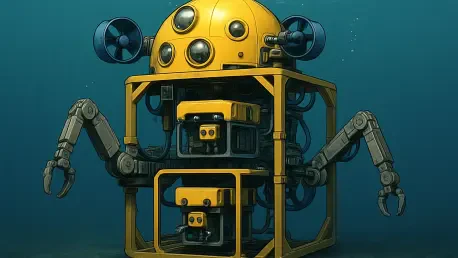Imagine a vast, uncharted underwater world where critical infrastructure like offshore energy platforms and subsea cables lies hidden beneath turbulent waves, requiring precise and safe inspection methods that traditional approaches struggle to deliver. The maritime industry is on the cusp of a transformative shift, driven by an innovative concept: nested robotic systems. These systems, where autonomous vessels deploy smaller remotely operated vehicles, are redefining how subsea inspections are conducted. Spearheaded by cutting-edge projects like the Pioneer-class autonomous uncrewed surface vessel (USV), this technology promises to enhance operational efficiency across sectors such as offshore energy, defense reconnaissance, and ocean science. By integrating advanced robotics with space-enabled tools, these systems are paving the way for safer, more sustainable, and cost-effective solutions to challenges that have long plagued underwater operations, setting a new standard for maritime autonomy.
The Power of Space-Enabled Robotics
At the heart of this revolution lies the seamless integration of space technologies with maritime robotics, enabling unprecedented capabilities for remote subsea inspection. The Pioneer-class USV, designed to launch and recover remotely operated vehicles (ROVs), leverages satellite communications (satcom) and Global Navigation Satellite System (GNSS) for Beyond Visual Line of Sight (BVLOS) control and precise positioning. This synergy ensures real-time data transfer between the USV and tethered ROV, even in the harshest ocean environments. A standout feature is the use of network bonding technology, which combines multiple connection bandwidths to maintain reliable command-and-control links, ensuring operations continue uninterrupted if a primary network fails. Supported by collaborations with leading space agencies, this approach not only enhances safety by reducing human exposure to hazardous conditions but also significantly cuts emissions associated with traditional crewed vessels. The result is a cleaner, more efficient method of inspecting underwater infrastructure, positioning this technology as a game-changer for multiple industries.
Milestones in Regulation and Commercial Readiness
The journey toward widespread adoption of nested robotic systems has recently achieved a groundbreaking milestone with regulatory approval, marking a significant step toward commercial deployment. The Pioneer system has earned certification under stringent maritime standards, becoming the first remotely operated vessel to gain such recognition globally. This achievement validates the readiness of these autonomous systems for real-world applications and underscores the rigorous safety and operational benchmarks they meet. Backed by contracts from prominent space agencies, the project is accelerating its path to market, promising to reshape subsea inspection practices across diverse sectors. Beyond technical innovation, this regulatory success highlights a broader commitment to fostering cross-sector growth, with space-enabled solutions driving resilience and leadership in maritime and aerospace fields. As these systems roll out, they offer a glimpse into a future where autonomous technologies tackle pressing challenges, from environmental impact to operational costs, with remarkable precision.









